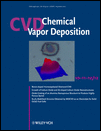Control of ZnO Nanostructures via Vapor Transport†
The authors are grateful to Felicity Sartain for discussions and help during experiments. Financial support for this project was provided by the Deanship of Scientific Research at King Abdulaziz University T/81/429. C.W.D. would like to thank the Ramsay Memorial Trust for Fellowship.
Abstract
An adapted form of vapor transport is used for the preparation of zinc oxide (ZnO) nanostructures. Control of substrate, partial pressure, temperature, and deposition time enable the synthesis of seven ZnO samples, each with different morphology. Characterization by X-ray diffraction (XRD), photoluminescence spectroscopy (PLS), and scanning electron microscopy (SEM) shows ZnO forms with a wide range of microstructures such as “nano-stars”, “nano-caterpillars”, urchin-like structures, and vertically aligned forests of hexagonal nanorods. Adopting a systematic approach of varying a single parameter from the standard experimental method, enables an understanding of why the resultant morphologies are obtained. In particular, a growth mechanism is proposed whereby hexagonal crystals grow from the catalytic substrate consisting of gold droplets, close to, or at, the melting temperature, supersaturated with zinc and oxygen, allowing propagation of hexagonal “parent” pillars. Parent pillars then form “daughter” rods which propagate sideways from the faces with angles tending towards 60° from each other.




